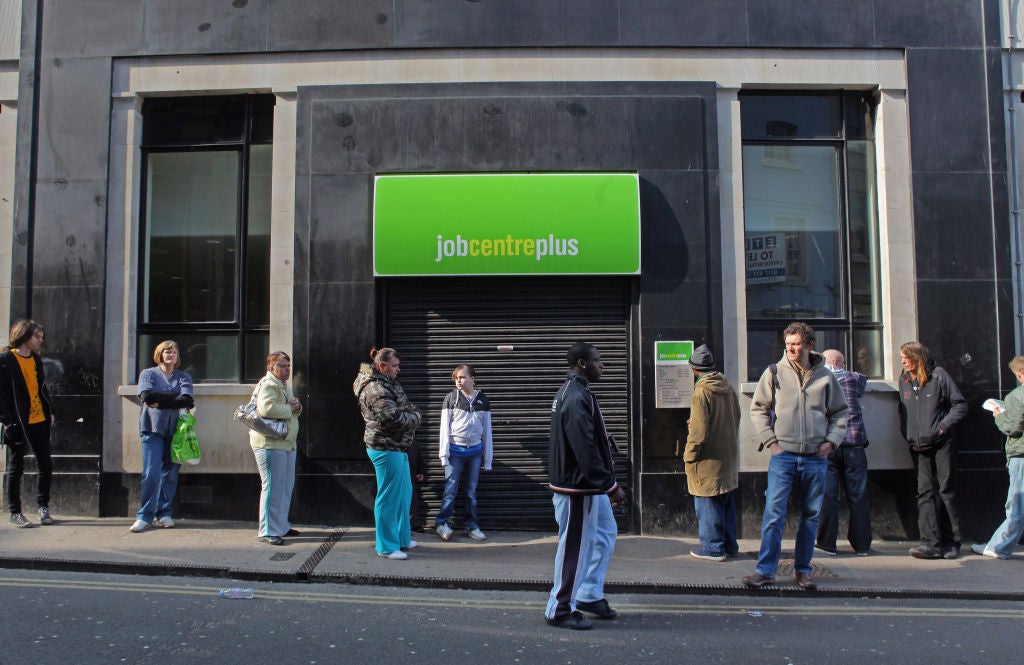Jobless figures take the shine off Britain’s exit from recession
Ministers have been hectoring the ill and disabled over ‘sicknote culture’ – but economic inactivity has worsened. James Moore looks at what the unemployment figures mean for chances of an early rate cut


After all the excited chatter about Britain’s recovery from shallow recession, we’re back to earth with a bump. An update from the Office for National Statistics (ONS) reveals that, while GDP is on the up, all is far from rosy in the garden of UK plc.
The rate of unemployment increased to 4.3 per cent between January and March, while the long-running decline in vacancies also continued, with 898,000 openings during the reporting period, down 26,000 on the previous three-month spell and (more importantly) down 188,000 compared to a year earlier. The number is still 102,000 above the pre-pandemic level, but we are now a long way from the brief period when the number of available jobs comfortably exceeded the number of unemployed people. Meanwhile, the latest claimant count stood at nearly 1.6 million.
One reason for the increase in joblessness despite the economy picking up is that unemployment is a lagging indicator. Employers usually try to avoid firing people until they absolutely have to because redundancy programmes are expensive, disruptive and sap the morale of remaining workers. Having to find new people if you get it wrong is similarly costly and disruptive. What we are seeing here is some delayed fallout from last year’s recession.
On the big economic question of the day – when will the Bank of England finally start cutting interest rates? – the data was equivocal. While a rise in joblessness favours a cut, wages still increased at a 6 per cent clip, uncomfortably high for the rate-setting Monetary Policy Committee (MPC). It is true that private sector pay rises declined a little, to 5.9 per cent, but the ONS cited an early estimate for April of 6.9 per cent pay growth – thanks in no small part to the scheduled increase in the government’s national living wage (the minimum wage, to you and me).
Having digested the numbers, the City decided that the chances of a rate cut in June, rather than August, have risen very slightly – but it remains a straight 50/50 bet.
For the record, I think they’re missing the impact of those wage numbers – especially that April estimate – on the trading floors. Wage rises in Britain’s dominant service sector closely track service price inflation, which has proved to be particularly sticky and has repeatedly been cited as a problem by the MPC.
It is worth remembering that unemployment in Britain remains very low by historic standards. But these are still poor numbers, especially for beleaguered prime minister Rishi Sunak if they do result in a later rate cut in August. Those buoyant GDP numbers released last week are tarnished. Jobs come well above GDP in voters’ pecking order. Even if wages are outpacing inflation, we have worries about unemployment playing into their behaviour; a reluctance to spend, the prioritising of cutting debt instead and a decline in people looking to change jobs.
Another gremlin in the ONS data concerns the rate of economic inactivity. This rather derogatory term encompasses those who aren’t in work and aren’t looking for it for a variety of reasons; it includes students, the retired, and carers, and also those not working because of sickness and/or disability. The latter have been a point of emphasis for Sunak and his ally Mel Stride at the Department for Work and Pensions.
If the economic pick-up is sustained, vacancies will ultimately rise while unemployment will fall back again. That would obviously be good news but will present a problem if Britain once again finds itself with more jobs than there are people to fill them at a time when its politicians and a substantial part of the electorate are resistant to any more immigration.
The rate of economic inactivity was 22.1 per cent – more than one in every five people of working age – which represents an increase over both the last quarter and on a year ago. Sunak and Stride have engaged in some deeply unpleasant behaviour of late; their proposed reforms to disability benefits have been seen as an assault on the disabled. Meanwhile, Sunak, has berated what he calls the nation’s “sick note culture” – ignoring the fact that the rate of absence in this country is lower than that of France, Germany and even the United States. Chancellor Jeremy Hunt’s beloved international comparisons are out, it seems, if they don’t suit the narrative.
Is this political approach helpful? Tony Wilson, director at the Institute for Employment Studies, says: “For all the talk about this being driven by a ‘sicknote culture’, the reality is that the UK has among the lowest rates of sickness absence in the world, while our analysis shows that the growth in ill health is being driven primarily by fewer people with health conditions coming back to work rather than more people leaving. So we need to do far more and better to make our employment services more accessible, inclusive and supportive, rather than just threatening to change the rules or cut people’s benefits.”
Put more simply: you catch more flies with honey than vinegar.



Join our commenting forum
Join thought-provoking conversations, follow other Independent readers and see their replies
Comments